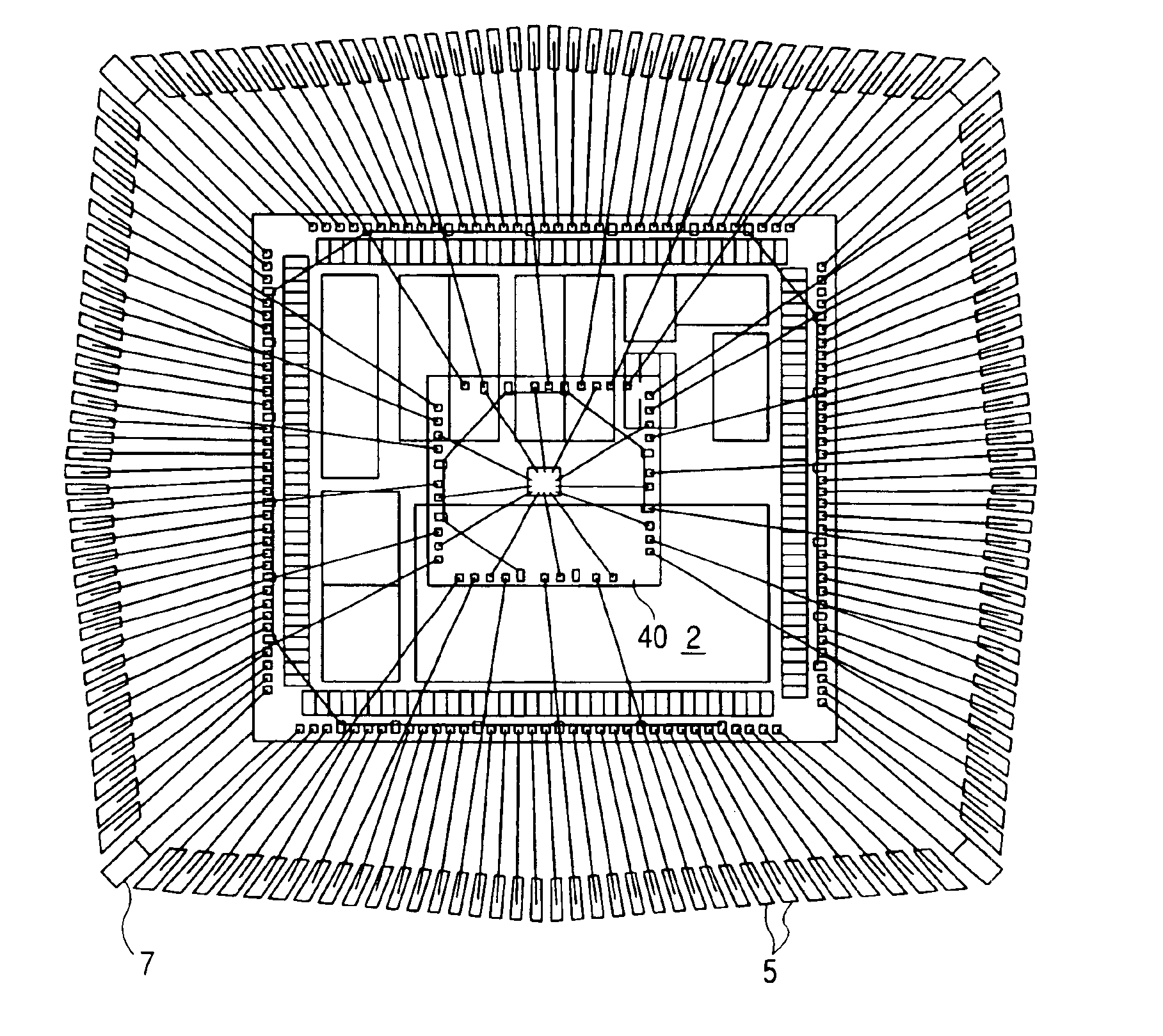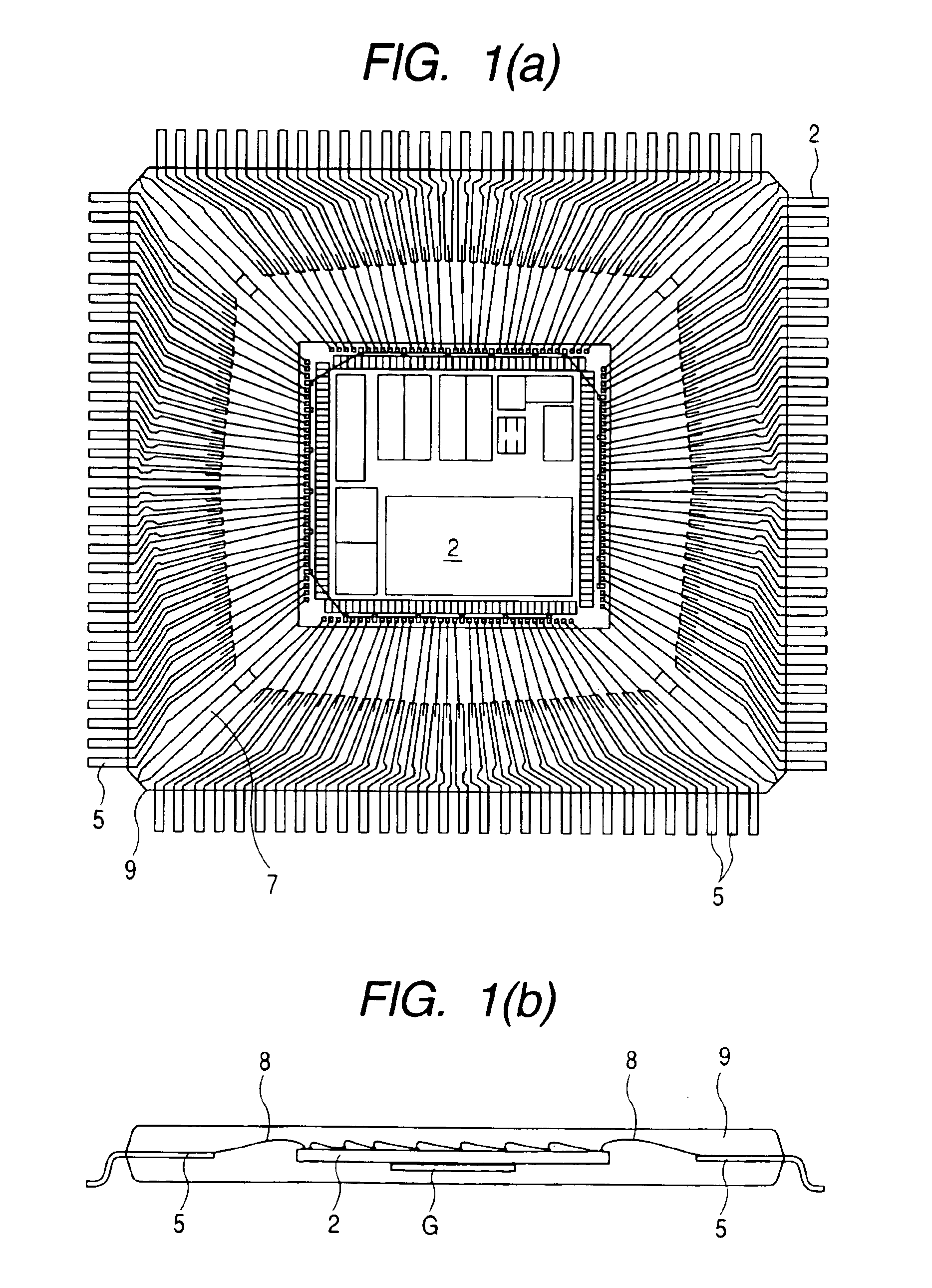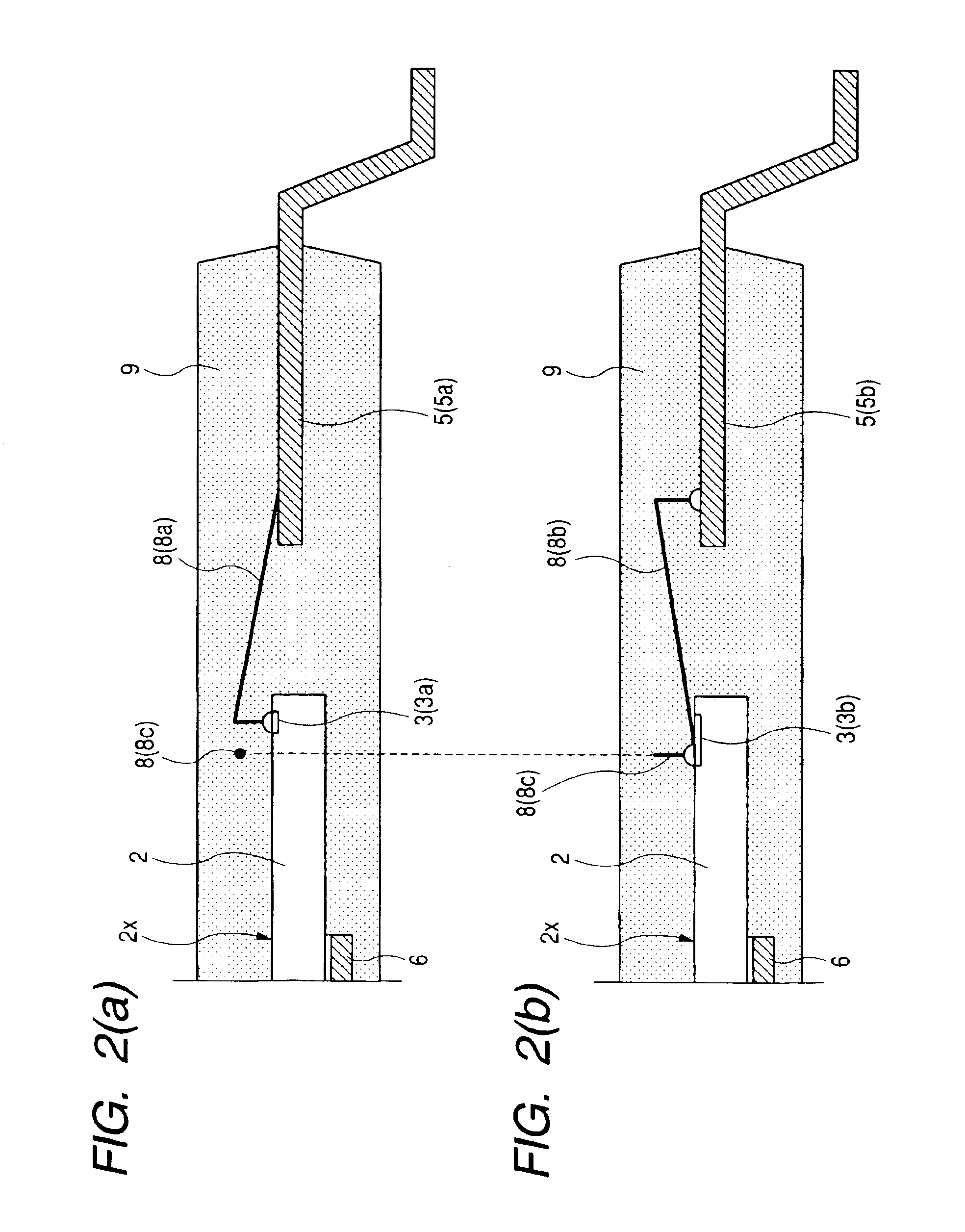Semiconductor device
a technology of semiconductor devices and semiconductors, applied in semiconductor devices, semiconductor/solid-state device details, electrical apparatus, etc., can solve the problems of further minimization of the size of the leads, difficult for the etc., and achieve the effect of reducing the number of power source leads and facilitating miniaturization of the semiconductor devices
- Summary
- Abstract
- Description
- Claims
- Application Information
AI Technical Summary
Benefits of technology
Problems solved by technology
Method used
Image
Examples
embodiment 1
[0059]In this embodiment 1, an explanation will be directed to an example in which the present invention is applied to a QFP (Quad Flatpack Package) type semiconductor device with reference to FIGS. 1(a) to 11.
[0060]As shown in FIG. 1(a) to FIG. 3, the semiconductor device of this embodiment 1 is mainly constituted of a semiconductor chip 2, a plurality of leads 5, a plurality of bonding wires 8, a sealing body 9 and the like. The semiconductor chip 2 is fixed by adhesion to a support body 6, which is referred to as a tab or a die pad, while, for example, four suspension leads 7 are integrally connected to the support body 6.
[0061]As shown in FIG. 7, the planar shape of the semiconductor chip 2 along the thickness direction thereof is formed in a quadrangular shape. In this embodiment 1, for example, the planar shape of the semiconductor chip 2 is formed in a square shape having a size of 7.6 [mm]×7.6 [mm].
[0062]Although the semiconductor chip 2 is not limited to the following const...
embodiment 2
[0106]In connection with the abovementioned embodiment 1, the explanation was directed to the example in which the number of the power source leads is reduced using the bonding wires. In this embodiment 2, an explanation will be directed to an example in which the number of the power source leads is reduced using relay bonding pads and bonding wires, with reference to FIGS. 15(a) to 22.
[0107]As shown in FIG. 21, a plurality of buffer cells 4 include a plurality of power source cells 4b2 and a plurality of bonding pads 3 include a plurality of power source bonding pads 3b2. The plurality of power source cells 4b2 are arranged at locations corresponding to the plurality of power source bonding pads 3b2.
[0108]Although not shown in the drawing, on an internal circuit forming portion 10, a power source line which supplies an operational potential (for example, 0V=Vss) to a plurality of input / output cells 4a, for example, is arranged. This power source line extends in a ring-like shape su...
embodiment 3
[0118]This embodiment 3 is directed to an example in which the number of leads is reduced by the combination of the abovementioned embodiments 1 and 2.
[0119]FIG. 23(a) and FIG. 23(b) show the inner structure of a semiconductor device according to an embodiment 3 of the present invention, wherein FIG. 23(a) is a plan view and FIG. 23(b) is a cross-sectional view.
[0120]As shown, the wire connection between bonding pads to which an operational potential (power source potential) Vcc is applied is established using the abovementioned embodiment 1 and the wire connection between bonding pads to which an operational potential (power source potential) Vss is applied is established using the abovementioned embodiment 2. In this manner, due to the combination of the abovementioned embodiments 1 and 2, the number of power source leads of two systems can be reduced, and, hence, it is possible to realize further miniaturization of the semiconductor device.
PUM
 Login to View More
Login to View More Abstract
Description
Claims
Application Information
 Login to View More
Login to View More - R&D
- Intellectual Property
- Life Sciences
- Materials
- Tech Scout
- Unparalleled Data Quality
- Higher Quality Content
- 60% Fewer Hallucinations
Browse by: Latest US Patents, China's latest patents, Technical Efficacy Thesaurus, Application Domain, Technology Topic, Popular Technical Reports.
© 2025 PatSnap. All rights reserved.Legal|Privacy policy|Modern Slavery Act Transparency Statement|Sitemap|About US| Contact US: help@patsnap.com



